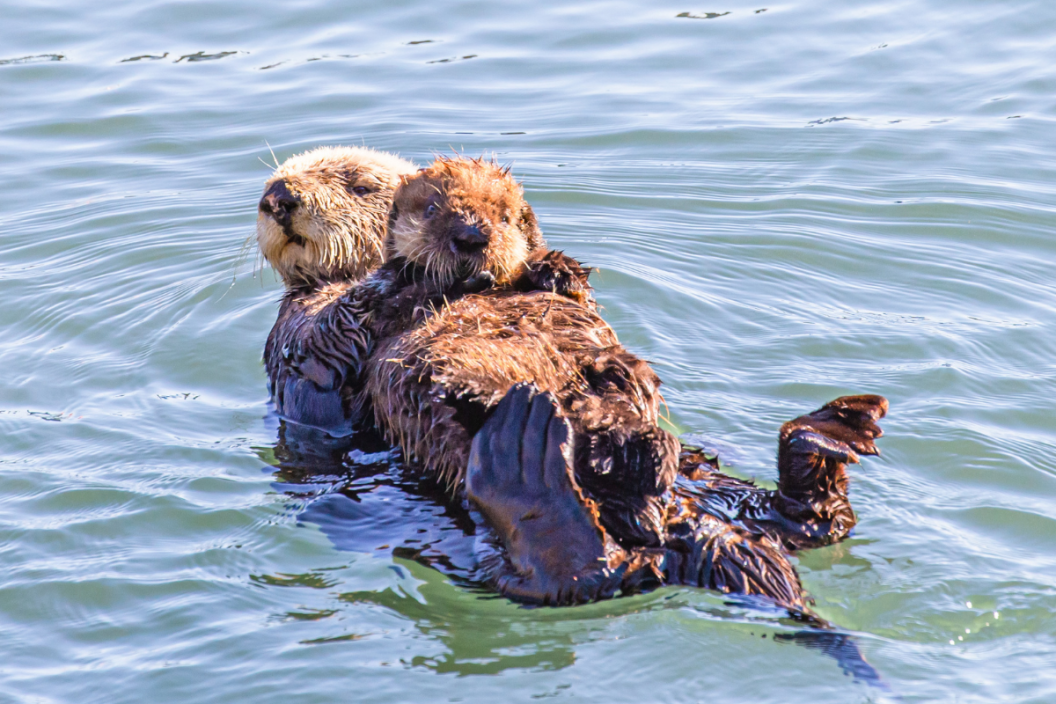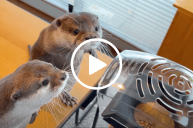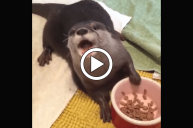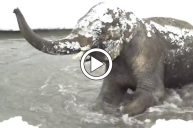Do you know why sea otters hold hands?
These cute animals have been caught holding hands with each other while they sleep. One of the most popular otter couples lives at the Vancouver Aquarium in British Columbia, and rocketed to Shutterstock and Wikimedia Commons fame with their hand holding scene. Fortunately, you can see otters holding hands practically everywhere, even in places like Alaska. You may have seen cute otter pictures on social media or especially as cute otter art during Valentine's day, such as art prints, wall art, coffee mugs, and more! This cuteness from the animal kingdom actually has a practical reason! Read on to learn more animal facts about these otterly amazing animals.
Why Do Sea Otters Hold Hands?

These little creatures clasp hands to keep from drifting apart in the open ocean and along the coastline. Sea otters holding hands are also concerned about losing family members while sleeping. When it comes to seeking a partner, male otters are fiercely competitive. These critters also clasp hands to avoid losing their significant otter to another male.
Otters, or Enhydra lutris (their scientific name), clasp hands as a kind of defense against predators and hunters. Otter fur is valuable, and the animal is frequently hunted. They may stay away from land by holding hands with other otters, making it more difficult for hunters to kill them.
Who Do Otters Hold Hands With?
https://www.instagram.com/p/1PCvPZSGCZ/
Sea otters are members of the weasel family and do not clasp hands with just any otter; they do it to avoid drifting apart while sleeping. They will choose either a mate or an otter from their family. When the parent has to go hunting, she protects her babies by covering them in seaweed. As a result, the puppies do not float away, and the mom can readily locate them. From the seabed to the surface, kelp forests grow. Adults can remain in one location by enveloping themselves in long strands of kelp.
Because newborns are too little to grasp hands while sleeping, it is difficult for them to do so. They avoid this by riding on top of their mother. Sea otter moms utilize kelp to keep from drifting away while sleeping by wrapping themselves in long strands of kelp. They utilize the kelp as an anchor, so they may sleep without worrying about floating out to sea.
How Do Sea Otters Sleep?
https://www.instagram.com/p/Bt4Q4WOgHtv/
Only sea otters swim on their backs, with the majority of their bodies above water. Because they are almost totally submerged when swimming with their back up, river otters do not clasp hands. River otters sleep on the ground, but sea otters sleep in the water. Other otter species cannot float in the water on their backs.
The sea otter has several adaptations that allow it to sleep in the water. To keep them dry and warm, they feature webbed feet and water-resistant hair. When they are submerged, their nose and ears likewise shut. The regular grooming actions of an otter are designed to keep them buoyant. Otters maintain their clean fur, and they work hard to be able to float in the water.
The holt or den of the North American river otter is its home. These are built by other animals and can be found under a log or on the riverbank. The dens feature an underwater or above-ground entrance that leads to a nest chamber carpeted with leaves, grass, moss, bark, and hair.
How Does Sea Otter Fur Help?
An otter's fur is thick, and it is replenished gradually rather than in a single season when it sheds. Otters spend a significant amount of time grooming. They clean the fur, untangling knots, remove any loose hair, and wipe the coat to wring out any excess water. They also blow air straight into their coat to infuse air into the fur. Because their fur keeps them buoyant in the water, they must keep their fur clean to maintain their natural buoyancy.
Do you love seeing otters holding hands? Share with us on the Wide Open Pets Facebook page!




